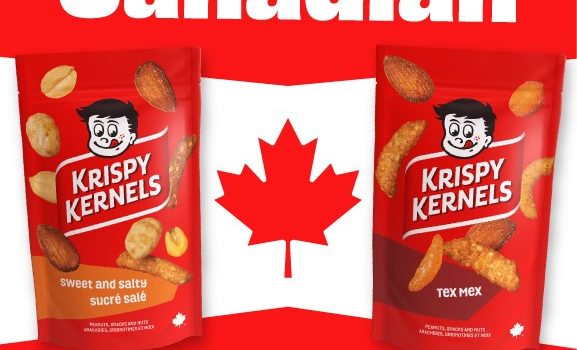When Quebec creative director Olivier Tran hit Toronto 10 years ago, he headed straight to the grocery stores to check out the backs of cereal boxes. Armed with the typos and awkward French translations he found, he made cold calls to prospective clients to say his small French advertising agency could do better.
Tran’s goal of attracting English-Canadian clients for translation and adaptation work was modest, but he did demonstrate that drumming up business beyond the Quebec border means pounding the streets rather than the boardroom table.
In fact, Tran’s agency is just one of many actively contesting the notion that Quebec agencies are trapped in a French-language ghetto, as they go about opening offices in New York, forging alliances with Chicago agencies, and riding national clients across the country and around the world.
How are they doing it? According to those with experience, the best expansion strategies include: out-of-province alliances and acquisitions; snaring national campaigns based on award-winning work in Quebec; and owning a niche sector with universal appeal, such as financial services marketing.
Tran, president of Montreal-based Admacom, chose the out-of-province alliance route, and eventually settled his agency into a unique arrangement with Toronto-based Communiqué, where he worked independently as their in-house French creative department. He says such alliances are a popular choice for ambitious agencies that can’t afford to buy their way into a new market.
Eventually, the Envoy Group phased out Communiqué, and with it Tran’s alliance, but that doesn’t mean he’s given up on expansion: Now back in Montreal, he is already working on leveraging his roots in France to establish global ties with Europe.
Lucie Dumas, executive VP and chief branding officer at Groupaction JWT, says that for her agency, the key to expansion is specializing in niche categories that are in demand everywhere.
While the Montreal-based agency has other concerns at the moment (it’s currently caught up in allegations that it didn’t deliver on reports commissioned by the federal Liberals), it can boast of significant success when it comes to expanding beyond Quebec.
‘It’s not which regional market we’re going to specialize in, but which category,’ Dumas says. ‘We’re looking for universal ideas that work in any culture. Of course, you have to have knowledge of the market, and some agencies do specialize in Quebec culture, but you see less and less of that. I prefer to specialize by discipline and be the best anywhere.’
One of Groupaction’s key categories is financial. The agency handles coast-to-coast accounts in French and English for AIM Funds Management’s Aim and Trimark brands. As well, six years ago, Groupaction forged a non-equity partnership with Toronto’s J. Walter Thompson, an alliance which now accounts for 10% of its revenue.
‘It’s the best of both worlds. We have access to an amazing network and can service the needs of our clients looking to expand to the States, Europe and Asia. And JWT has found a strong partner to handle its business in the Quebec market.’ Dumas adds that it is also a great opportunity to work on such unpitchable megabrands as Kraft, Kellogg and Nestlé, which can keep their agencies for decades.
Only five years old, Côté Larouche Communications Marketing also grew a specialized category for itself, then dove right into an international alliance.
Before he and partner Jean Côté set up shop in Quebec City, senior partner Jean-Francois Larouche worked a couple of years for Chicago-based Gams Group. After moving to Quebec, the entrepreneurs noticed that many small and mid-sized manufacturers in the region export products to the U.S., and needed help updating their sales tools for that competitive environment. For instance, Larouche helped IPL Packaging rebrand itself as IPL Innovative Packaging by Design, to give it a more modern image for the U.S.
‘These companies were so focused on production they couldn’t see they had a brand on their hands,’ says Larouche. So the agency entered into an agreement with Gams to give an American opinion on positioning strategies. ‘We offer the opportunity to be in contact with the American market from here,’ says Larouche. Côté Larouche also partnered with Gams to create Vortus Canada, a specialized company that offers Web services to clients.
But perhaps the best way to pull in more national and international work is to establish a stellar reputation for award-winning creative and spread the word until clients come knocking. This is the route taken by Montreal-born Taxi, which opened a Toronto office in 1992, and Bos, which now operates offices in both Toronto and Montreal.
Michel Ostiguy, the O in Bos, explains that his company’s expansion into English Canada is rooted in ‘a good reputation for creative built over the last 14 years.’ Second only to Cossette Communication-Marketing when it comes to Coq d’ors in the trophy case, the agency now employs 72 people, eight of whom work in the company’s Toronto office.
Its work in Quebec for Montreal-based Couche-Tard, which recently bought Mac’s convenience stores, was rewarded March 18 when it received the Mac’s account for all of Ontario.
Bos first made its name outside of Quebec with the Fido campaign for Montreal-based cellular provider Microcell. The agency helped make the cellular underdog a household name by advising against marketing the phone under the company name in favour of the Fido brand, and creating its now-familiar dog-related imagery and the universal tagline ‘You’re The Master.’
This achievement in positioning was recognized by a Cassie award for Best Product Launch in 2000, and Bos was trusted to do the rollover across Canada, thus abetting the agency’s national aspirations.
In fact, this is a recurring motto for agencies on the move: Follow that client. For instance, the reason Cossette first opened offices in Winnipeg and Edmonton was to accommodate McDonald’s franchising needs. ‘If you don’t grow with a brand, you lose it,’ warns Cossette SVP, corporate development Georges Morin.
Similarly, Jean-Marc Léger, president of Montreal-based Leger Marketing, says his market research firm grew to be the number one all Canadian-owned research firm (ninth overall) ‘by accompanying clients [like Loblaws] across the country.’
In fact, the company recently opened a New York office to follow clients like Couche-Tard and Pharmacie Jean Coutu, which are expanding into the U.S. And while Léger’s foothold into the States came courtesy of his clients, establishing a presence in such a huge market is good for future expansion as well: The research market in Quebec is worth about $40 million; for all of Canada it’s worth $240 million; but in the U.S., we’re talking $5.4 billion.
‘If we want to develop, we have to go where the money is,’ Léger says, and it looks like he’s right: Since the New York acquisition, sales have grown by 38% – with 24% linked to organic growth and 14% due to the takeover. Léger adds that his marketing firm is enjoying growth not only because of expansion into new markets, but also thanks to the growth of specialized niche services, such as taking on legal research for court cases involving brand infringement.
With billings of over $600 million last year, Cossette is Canada’s largest independent communications group, and thus perhaps the country’s leading expert on expansion beyond the local. And 21 years after the agency’s first step outside Quebec with Cossette Toronto, Morin is still an advocate of looking beyond the local.
‘For the past 10 years, Quebec agencies have been very successful convincing national clients to have a strong regional strategy,’ he says. ‘However, if we keep on thinking regional, we are doomed to be a small player.’
Headquartered in Quebec City, the communications group has now acquired companies in all the major cities across the country. But the growth isn’t stopping there: Cossette’s 2001 Saturn campaign – which showed the extraordinary lengths Saturn dealers would go to for their customers (including pre-installing a baby seat for a mother-to-be as a surprise for her unknowing husband) – was picked up in some local U.S. markets. Then, late last year, the company expanded down south by acquiring New York-based Post & Partners, now called Cossette Post. This is in addition to the company’s first foothold in the U.S., a Washington-based PR firm acquired in 1997.
The goal? To make its Convergent Communications concept a reality, with a network of specialist firms across North America – from interactive groups to brand management teams – that can service the increasingly multifaceted needs of clients.
In spite of Cossette’s legacy of acquisitions, expansion can be achieved ‘without necessarily having a physical presence in the market,’ says Morin.
If the trend is toward universal creative, he says – rather than separate executions in English and French – these ideas could just as easily come from Quebec. ‘It is important to raise the level of creativity and training to meet international standards.’
But before that happens, both Morin and Tran say, the province’s agencies will have to overcome their dependence on the province’s powerful star system, which sees much-loved local singers, athletes and actors fronting many products.
For instance, the popular Monsieur B. (Benoit Brière) has done wonders promoting Bell’s add-on phone services, says Tran. And back in 1999, Tran himself created an original Quebec campaign for A&W featuring funny man Mario Jean obsessing over the burgers. Dumas’s team at Groupaction, in turn, searched for young and friendly stars, representative of the target audience for Tim Hortons, which they found in Quebec TV stars Elyse Marquis and Patrick Labbé.
Popular yes, Tran says, ‘but these commercials are not relevant to anyone other than Quebecers.’
‘It’s not sufficient to have local talent; you must also have impactful creative that sells,’ Morin concludes. If agencies are to grow in the future, they must stop using this crutch and stretch to find the Big Idea that will win over the rest of the world.























